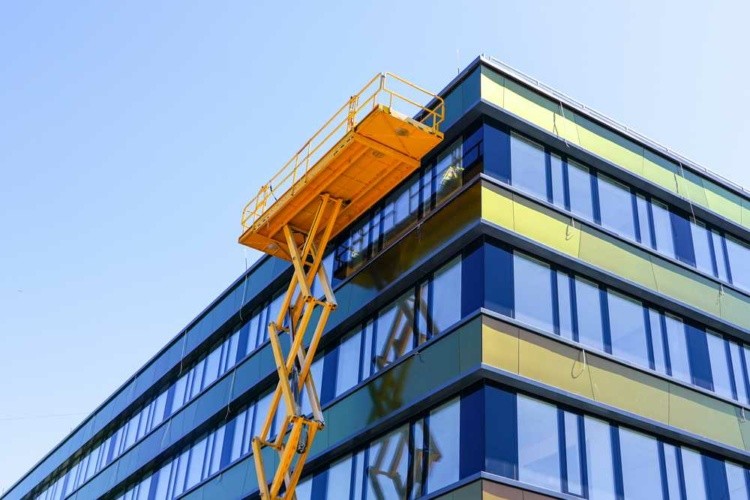Scissor lift – operational safety and maintenance of the device
Scissor lifts are very functional devices with a wide range of applications. They are used, among others, on construction sites, as well as when carrying out various types of activities at heights. However, due to the fact that the scissor lift rises vertically, often transporting employees, ensuring occupational safety and maintaining the device are extremely important. Here's what you need to know about it.
Contents
Where are scissor lifts used?
Scissor lifts are devices that have been known for many decades, but are still equally functional. The design based on a hydraulic mechanism ensures comfortable and safe lifting of people and relatively light loads. It's worth remembering that The aerial scissor lift has a relatively low lifting capacity compared to telescopic boom lifts or front loaders.. It is usually several hundred kilograms and does not exceed 0,5 tons.
The second important parameter that determines how a scissor lift is used is the height to which the device can lift the load. Most often, it is not very large - it usually ranges from just over 5 to about 17-18 m. It all depends, of course, on the specific model.
The relatively low lifting capacity combined with an upward reach of several meters means that scissor lifts are used, among others, while:
- various types of construction works - e.g. related to bricklaying, replacement of facades and similar works,
- service works carried out at heights - these may include various types of renovations, as well as cleaning windows in a building with a glass facade,
- electrical work - e.g. repairs performed on electric poles.
So as you can see, each of these situations carries certain risks. This means that both occupational health and safety rules and maintenance instructions for these vehicles must be strictly followed.
Construction scissor lift – health and safety rules
Activities that use scissor lifts may be classified as work at height. Therefore, people responsible for its organization, as well as the employees themselves, must comply with certain occupational health and safety rules.
What must an employee remember when using an electric scissor lift?
People who enter the lift basket must take special care of their safety. They are the most vulnerable, especially to falls from heights.
The basis is the use of appropriate personal protective equipment, such as a helmet, safety shoes, special harnesses for working at heights and a reflective vest. The harness should be attached to an appropriate anchor.
It is also important that the employee must have up-to-date tests confirming there are no contraindications to working at heights and have completed on-the-job health and safety training.

An equally important issue is the employee's compliance with safety procedures. The most important issues are:
- designating a safety zone around the place where the scissor lift works,
- checking the technical condition of the machine before starting work, in particular checking the operation of emergency switches, the control panel and the emergency lowering system of the machine,
- maintaining work safety - e.g. avoiding approaching high-voltage lines (even though the lift basket is equipped with protection),
- making sure before starting operation that the vehicle has a full battery or a full tank - depending on whether an electric or combustion scissor lift is used,
- immediate interruption of work if a fault, oil leak or other undesirable event is detected.
How to maintain scissor lifts?
Maintaining safety when operating a self-propelled scissor lift or any other type of such device is only one side of the coin. The second is to ensure proper maintenance and regular servicing of these devices.
The basis for allowing any scissor lift to operate is important UDT tests. They confirm that the equipment can be used. The inspection is carried out by the Office of Technical Inspection once every 12 months. It can be performed by a person who has obtained appropriate authorizations.
It is equally important to regularly service these vehicles. Ideally, service and maintenance should occur every 90 days. Such frequent inspections help maintain the full functionality of the device's systems - including the hydraulic mechanism responsible for lifting the lift, as well as the electrical and mechanical equipment. Moreover, in the case of equipment used to perform work at heights, the principle "prevention is better than cure" is particularly clear.
Are you leaseing a scissor lift or buying a used device? Choose a trusted source
Many entrepreneurs decide to lease scissor lifts for a short or long term or to purchase a used device. Both of these steps can be beneficial from a business perspective, but regardless of the option you choose, you should make sure that the equipment you choose meets safety standards.
If you need reliable and fully functional equipment, contact us. GIZO only offers equipment that is regularly serviced in accordance with the manufacturer's requirements. We invite you!


